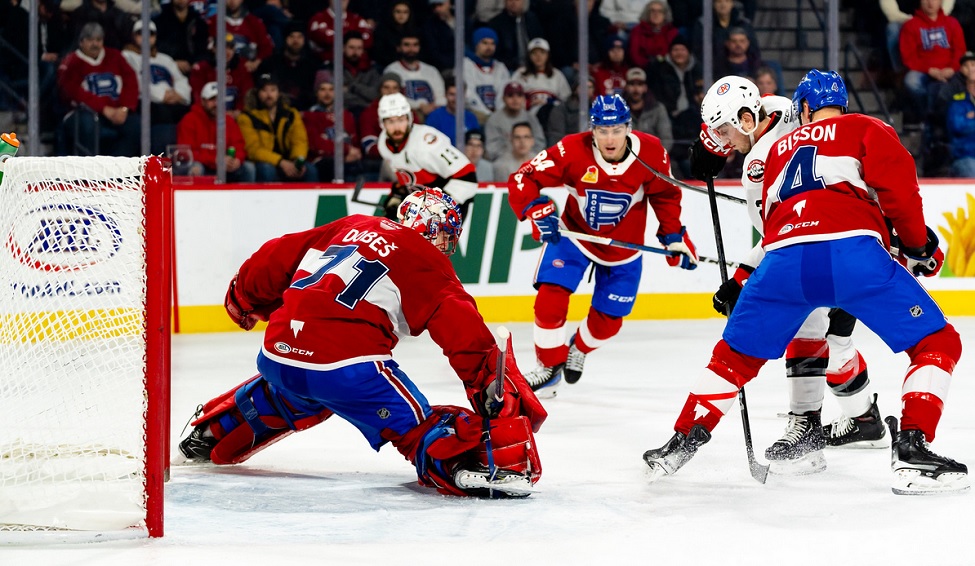HabsWorld.net --
The Habs had several junior-aged players under contract in 2018-19. Among them, only Jesperi Kotkaniemi saw time with the Habs and as a result, several players have seen their contract slide back a year. Here is a look at which prospects qualified for it and how their cap hit will be changed.
What is the ‘Slide Rule’?
If you’ve been a regular reader of this site, chances are you’ve seen me refer to ‘slide rule’ players over the years. These are junior-aged prospects who were under contract for the previous season but did not suit up in ten or more games with the NHL team. As a result, their contract slides (gets extended by) an extra year with a corresponding change in their cap hit.
Who was eligible for a slide?
The Habs had a total of four junior-aged prospects under contract and all but Kotkaniemi will see their contract extended. The others were Josh Brook, Nick Suzuki, and Joel Teasdale.
How does the cap hit change?
In most instances, simply put, the cap hit is reduced by the value of the signing bonus paid in that season divided by the number of years remaining on the contract (which in this case is always three). The players’ NHL salary in the final year of the new deal is lowered by the signing bonus paid out in the season where the contract slid. There are some exceptions, however. If reducing the players’ NHL salary in that final season by the amount of the signing bonus takes the new salary below the league minimum, the players’ salary for that season will be the league minimum. In those cases, the basic calculation for the reduced cap hit (signing bonus divided by three) doesn’t apply.
New Cap Hits
Note: All NHL salary amounts include signing bonuses.
Josh Brook: Brook signed his entry-level contract back in training camp after a bit of a disappointing 2017-18 campaign that was marred by injury. As we all know, he had a great 2018-19 season with Moose Jaw and even saw some time in Laval. Those games were spent on an amateur tryout agreement, however, and didn’t affect his NHL contract. His new breakdown is below:
| Season | NHL Salary | Performance Bonuses | Signing Bonus | Cap Hit before Bonuses | Cap Hit with Bonuses |
| 2018-19 | Entry-level slide | $92,500 | $809,167 | $925,000 | |
| 2019-20 | $792,500 | $0 | $92,500 | $795,000 | $10,833 |
| 2020-21 | $792,500 | $0 | $92,500 | $795,000 | $910,833 |
| 2021-22 | $800,000 | $0 | $0 | $795,000 | $910,833 |
Brook’s base salary for 2021-22 must be $750,000 as that is the league minimum for that season (even though everyone knows the opt-out will be exercised well before then). As a result, the net savings is reduced by $50,000 (going from a $700,000 base to a $750,000 base). Instead of $92,500 in savings, the team only saves $42,500 over three years ($14,166.67 per season).
Nick Suzuki: He’s the only player on this list that was eligible for a second slide as he had signed his entry-level deal with Vegas less than a month after being drafted. Considering it’s likely that Suzuki will be in Montreal before too long (even with some time in Laval), the extra savings should come in handy. His new contract structure:
| Season | NHL Salary | Performance Bonuses | Signing Bonus | Cap Hit before Bonuses | Cap Hit with Bonuses |
| 2017-18 | Entry-level slide | $92,500 | $925,000 | $1,387,500 | |
| 2018-19 | Entry-level slide | $92,500 | $894,167 | $1,356,667 | |
| 2019-20 | $925,000 | $425,000 | $92,500 | $863,333 | $1,325,833 |
| 2020-21 | $832,500 | $425,000 | $0 | $863,333 | $1,325,833 |
| 2021-22 | $832,500 | $537,500 | $0 | $863,333 | $1,325,833 |
His calculation is fairly simple. For the second straight year, his cap hit goes down by $30,833.33 ($92,500 signing bonus divided by three).
Joel Teasdale: His strong showing at rookie camp helped him earn a three-year deal with the base salary checking in at the league minimum for all three. This actually is going to come back to bite the Habs a little as you can see below:
| Season | NHL Salary | Performance Bonuses | Signing Bonus | Cap Hit before Bonuses | Cap Hit with Bonuses |
| 2018-19 | Entry-level slide | $80,000 | $753,333 | $776,667 | |
| 2019-20 | $770,000 | $0 | $70,000 | $763,333 | $786,667 |
| 2020-21 | $760,000 | $0 | $60,000 | $763,333 | $786,667 |
| 2021-22 | $750,000 | $0 | $0 | $763,333 | $786,667 |
Teasdale sees an extra $100,000 added onto his contract by losing a $650,000 base salary in 2018-19 to a $750,000 base in 2021-22. However, that amount is offset by the signing bonus. That brings us to a new wrinkle as the signing bonus differs each year. Therefore, instead of taking the $80,000 signing bonus in 2018-19 as the amount to offset, we instead have to use the AAV of the signing bonus over the life of the contract ($70,000). As a result, the net increase to Teasdale’s contract is $30,000 over three years, or $10,000 per season.


